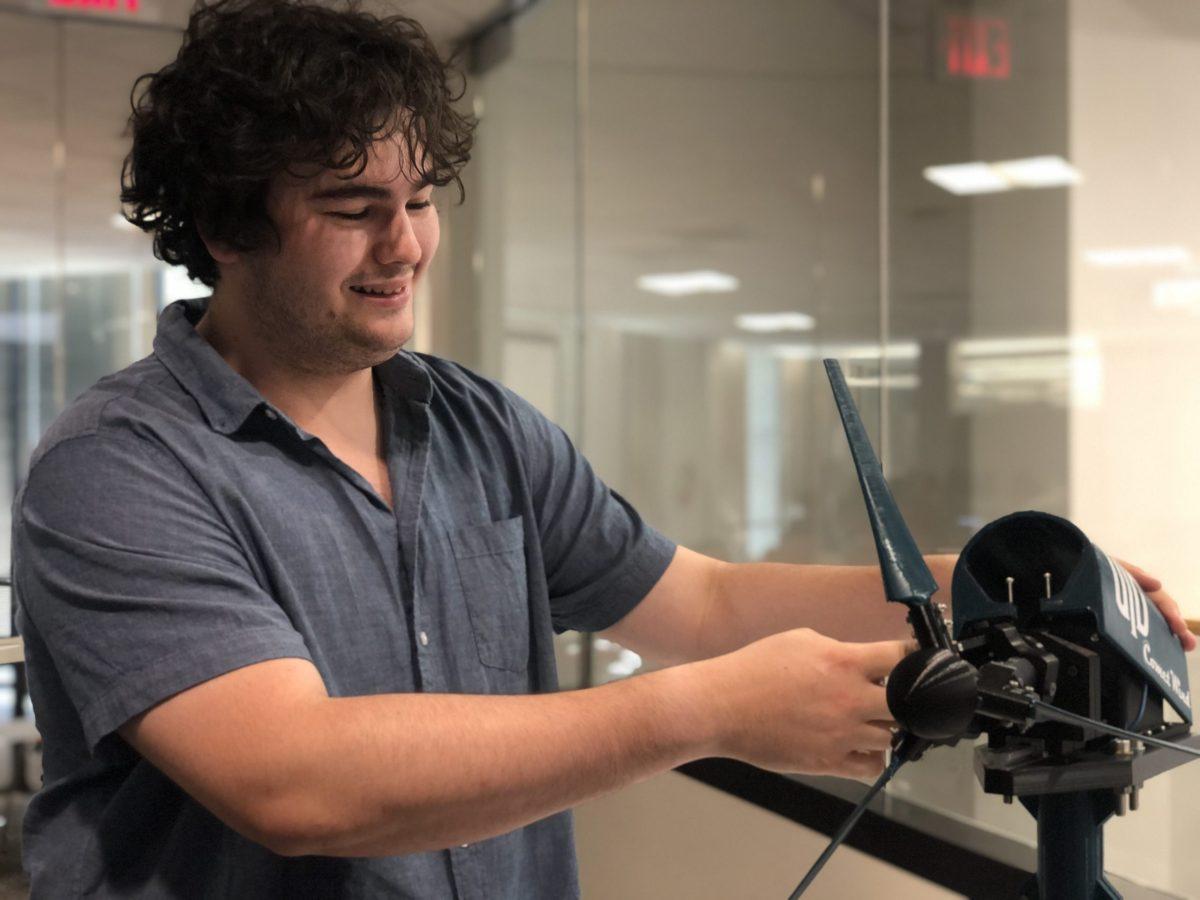Innovative and forward-thinking, the Wind Energy Club at UTD works at the intersection of energy and sustainability to build turbines to compete on the national scale. In their first year officially competing at the Department of Energy’s May 2023 Collegiate Wind Competition, the team advanced to the final phase of the contest and placed No. 4 out of 30 teams.
Founded in 2021, Comet Wind has amassed over 75 members interested in sustainability and wind energy. From creating a small-scale wind turbine prototype to analyzing the feasibility of a wind farm, the competition allows students to build their STEM skills in a unique way that addresses real-world topics. Through all their highs and lows, the students have been able to grow professionally by learning about career opportunities in the field as well as honing their interpersonal skills as they work with their teammates. As the organization moves forward, UTD Wind welcomes participants from any UTD schools who are curious and willing to learn more about renewable energy.
It all started with just four students: electrical engineering graduate student Thor Westergaard, mechanical engineering graduate student Dan Bouzolin, alumnus Jose Marquez and electrical engineering senior Fernando Harmjanz. As one of the founding members and president of the club, Bouzolin helped to lead operations, oversee officers and work on the mechanical side of the wind turbine design. From technical design to project development, Bouzolin and other Comets’ teamwork pushed them to a great success.
“It was great because we saw just how much work everybody had been putting in the whole fall semester last year,” Bouzolin said. “And it was great to see it finally pay off. And we knew that we had a solid design, and it was validating for us to see that we were selected to compete.”
The journey to fourth place was not completely smooth. Members discovered that one of the turbine components, the optical isolator, was broken thirty minutes before they were set to present. The team did not have a backup, and the specific component would take three days to ship. Even with a broken part, the team was able to adapt, present and place in the competition. Robin Reeves, mechanical engineering senior and turbine design lead, said that the team’s tenacity comes from the close-knit, familial dynamic they developed while competing.
“This will sound crazy, but my favorite part was everything that went wrong, and so many things did,” Reeves said. “The week of the competition was the craziest, most exciting, most frustrating, devastating and vigorous team building experience of my life … It felt like we went to war together, and we came out of it just like family … I don’t think I’ve ever been on any kind of project or any team where I felt this level of camaraderie. And it’s 100% because of that experience.”
Comet Wind has a uniquely high percentage of female members compared to other engineering organizations, creating more opportunities and connections for women in STEM. According to the U.S. Census Bureau, in 2021, only 9% of mechanical engineers and 10% of electrical engineers were female. Alyssa Tran, mechanical engineering sophomore and connection creation team lead, works on the connection creation team, which organizes outreach through social media posts and wind energy engineering workshops at local community centers and schools. Tran said she particularly enjoys the club’s inclusive atmosphere.
“Just being able to be around other women in engineering is really exciting, and especially a lot of really intelligent women that when you’re working alongside them, you get really inspired,” Tran said.
This culture of support extends to all members of the team, as mentorships and friendships are key to their success. Harmjanz said he has had the opportunity to experience this success firsthand and hopes to pass it on to the next group of club members. Starting the club as a sophomore, Harmjanz has gained technical skills and developed a passion for power electronics through his time in Comet Wind.
“I’ve really grown from being just only a mentee to also being a mentor as well in the club, which was a really unique feeling,” Harmjanz said. “And one year [after starting], I was in a strange position of being a mentor to the new people because we started off as a team of four people total … and we grew … so I was in charge of mentoring the new leads and the new members.”
Todd Griffith, professor of mechanical engineering and advisor to Comet Wind, is another aspect of the team’s success. Griffith has been working in the wind energy field since before he arrived on campus. In 2018, he was part of a collaboration to design the largest wind turbine in the world, a50-megawatt turbine inspired by the shape of palm trees, and the Griffith Lab, has been exploring innovative approaches to wind energy since 2018. After seeing students’ hard work, Griffith, who attended the first iteration of the Collegiate Wind Competition while he was working with Sandia National Labs, was determined to establish a team when he started teaching at UTD.
“So, I want to emphasize just what I saw … how together they were trying to do well and help each other out in the competition, and things did not always go well,” Griffith said. “There were always things that came up … but they all remained patient and stuck in it together and really supported each other.”
As the Wind Energy Club moves into a new year of competition, they are looking to expand the scope of students involved in the project. Though it may seem engineering intensive, the different sections of the competition allow for students from JSOM to ECS to get involved. Students can visit Comet Wind’swebsite to read about current research projects and how to get involved.





